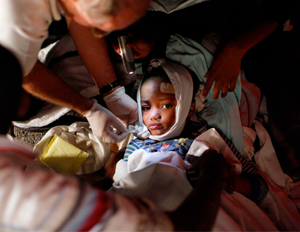What’s Different One Year After Haiti?

One year ago a devastating 7.0 magnitude earthquake struck the island of Hispaniola. The earthquake occurred at 4:53pm EST and the epicenter was 16 miles west of Port-au-Prince, Haiti. Nonprofit organizations responded to the disaster and so did their supporters.
The Chronicle of Philanthropy estimates that $1.4 billion was raised for relief efforts. Ten charities raised 75% of all those donations. The Chronicle has a very good breakdown of what organizations raised and what has been spent so far.
Since that day many nonprofits have changed and improved how they respond to these kinds of disasters. Some still haven’t applied the lessons learned to their organizations. What has your nonprofit done since January 12, 2010?
Showing Fundraising to Outcomes
Doctors Without Borders/Médecins Sans Frontières (MSF) raised over $68 million in the US to support their important work in Haiti. The organization raised $135 million worldwide and has spent $70 million of that total so far. MSF has published a special report that details their response to the earthquake, important outcomes, and ongoing needs.
The MSF report sets a new standard for how nonprofits need to communicate the ways donations are used and the magnitude of ongoing needs. This is what the future looks like for transparency, accountability, and demonstrating how giving produces measurable outcomes. Is your nonprofit organization doing something similar? Why not?
Planning for the Unplanned
Emergency situations can impact any nonprofit organization. They are not limited to international relief organizations. There is a limited window to reach and engage supporters. If you wait for the emergency to happen, then it’s too late
Having reliable people, processes, and technology are critical. Here are some key questions for nonprofits to ask themselves.
People
Does your staff have experience with prior emergency situations?
Do you have pre-defined segments for previous episodic donors?
Do you have identified volunteers and engaged constituents?
Do you have established contacts with the media and online content sites?
Process
Does your organization have an emergency rapid response plan?
How quickly can content, copy, etc be approved and posted?
What is the follow-up plan for the media, donors, etc?
How will you gather information about the results of your efforts?
Technology
Can your website and giving forms handle 4x their normal traffic?
Do you have a scaled down shadow website ready to go?
Do you have email templates ready to go?
Do you have offline and well as online channels ready to go?
Unfortunately, this will not be the last emergency that nonprofit organizations will have to respond to. But there are steps that they can make to be prepared.
